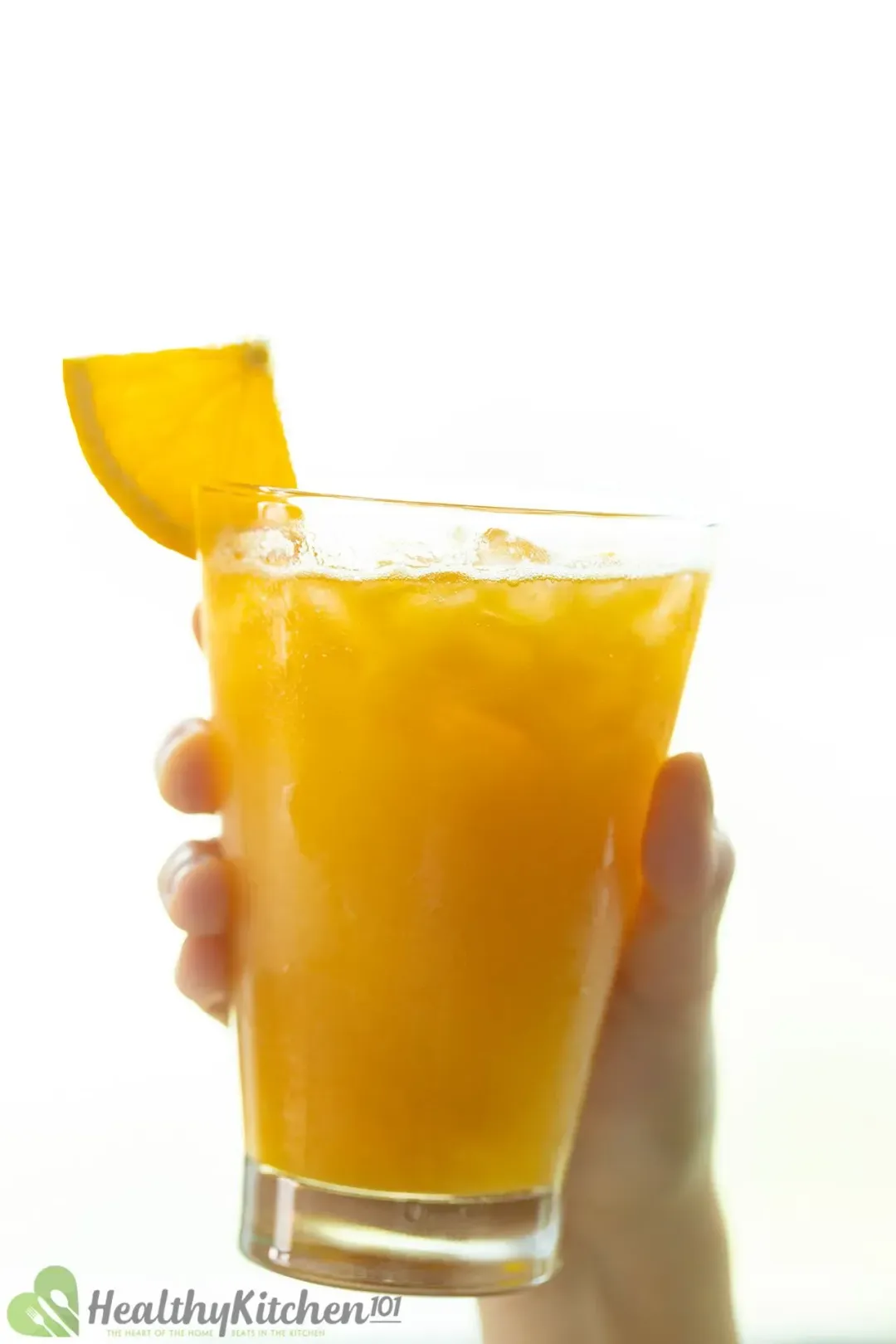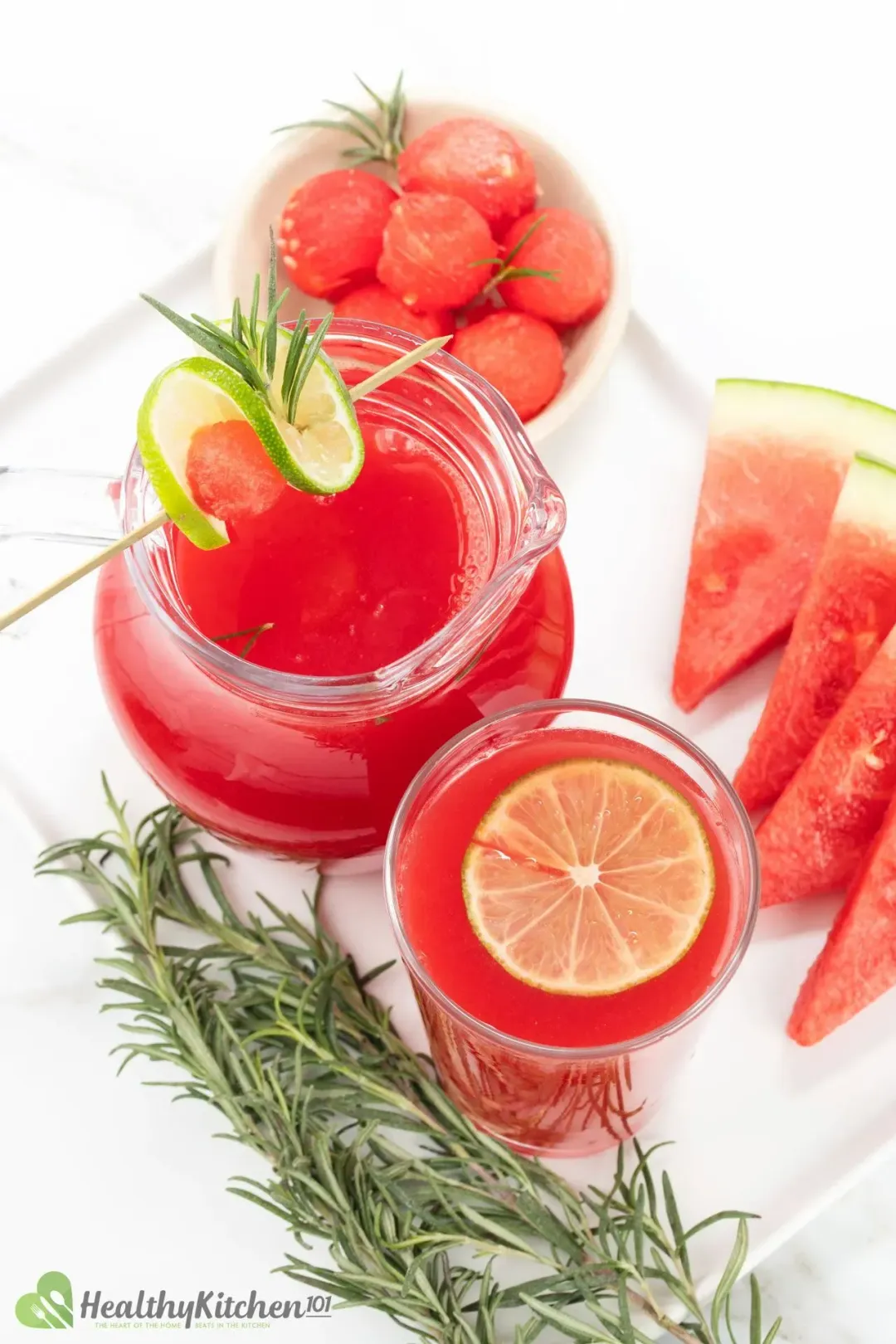Two great tropical flavors combined in a glass of sunshine, our orange mango juice recipe is a must in your favorite list for many reasons.
Orange and mango, two fruits perfect for summer refreshment, deliver a harmonious blend of sweet and tangy flavors. This juice does not require complex techniques or any expensive equipment (though you can use a blender which you may already have in your kitchen.)
Additionally, there is no added sugar or artificial sweeteners, so you won’t have to worry about piling calories and what you’re putting into your body. Each serving only yields 106 calories, making it great as a light starter in the morning or to fuel you back up after a workout.
Is Orange Mango Juice Good for You?
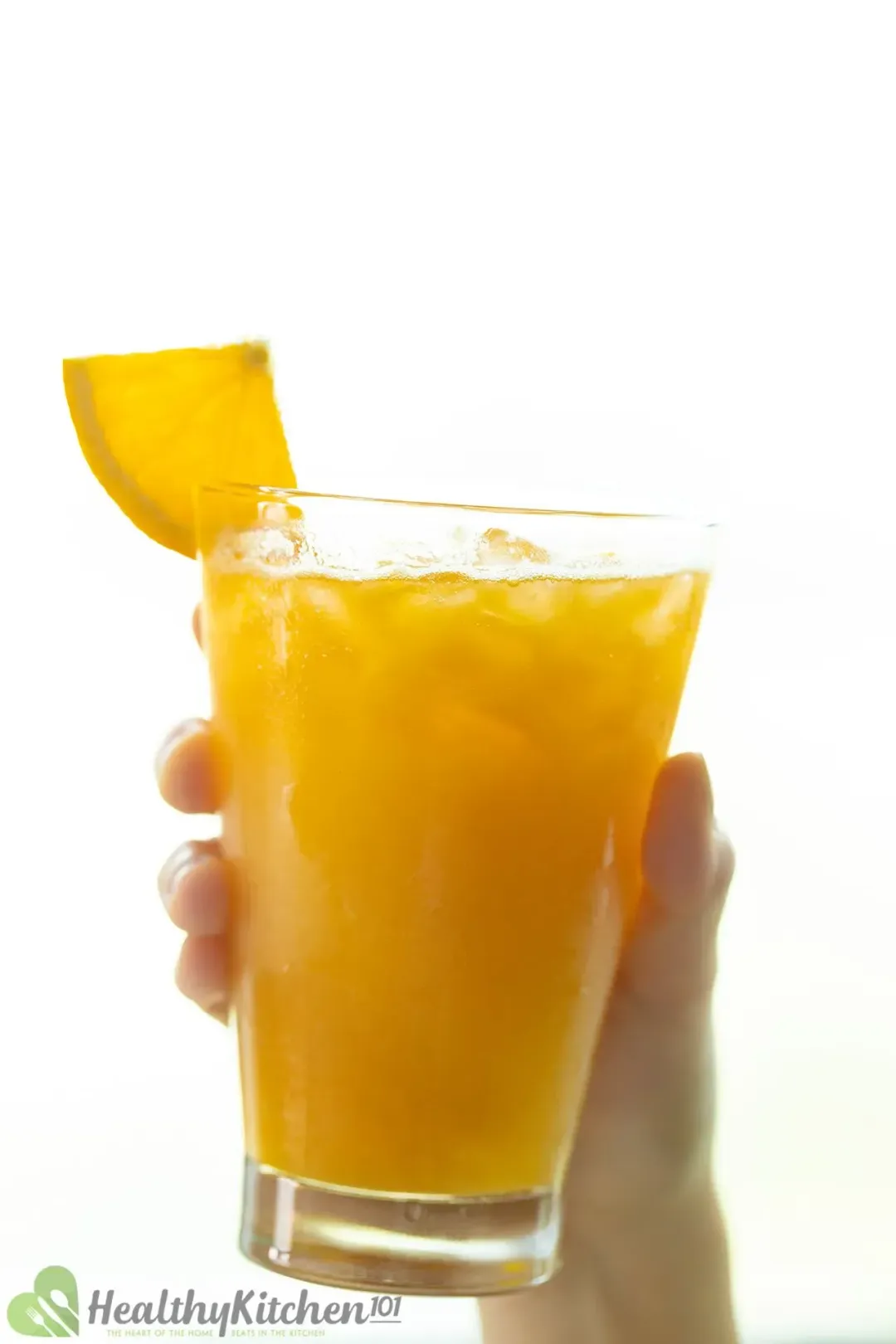
Orange mango juice nourishes your body with an impressive amount of vitamins and minerals that benefit your health in many aspects.
- Supports eye health: orange is high in beta-carotene which is converted into vitamin A through the digestive process. A high amount of lutein and vitamin A helps to protect the surface of your eyes and contributes to good vision.
- Boosts immune system: A medium orange provides about 53 mg of vitamin C and mango works as a great vitamin boost with 36 mg of vitamin C in each 100 grams flesh. Vitamin C supports several immune mechanisms in your body, including regulating the production and function of white blood cells. So, it helps to support your body to fight off illness-causing viruses and bacteria.
- Maintains blood pressure: Some essential nutrients, such as potassium and magnesium found in orange and mango juices, help your heart and nerves function properly. Those minerals also efficiently manage the fluids in your body and regulate blood pressure.
That’s a lot of health benefits from a 2-ingredient drink! Let’s look at the best way to make it, starting with the produce.
Mango Types for Juicing
Mangoes are one of the most widely grown fruits in the world. It isn’t surprising that there are nearly a hundred different varieties of this fruit and they vary in both taste and appearance.
The most commonly available mangoes in America are: Haden, Tommy, Francis, Ataulfo, Keitt, and Kent mangoes. And they each have their own identifying features.
Haden and Tommy Atkins mangoes feature thick, creamy flesh with fiber, making them great for salads and desserts. On the other hand, Francis, Ataulfo, Keitt and Kent mangoes are the most popular for juicing.
Francis: Francis mangoes are easily distinguished by their oblong shape and yellow skin. The taste features sweetness with a slight note of spiciness. Most of the Francis kind come from Hati and are available during summertime, from May to July.
Ataulfo: Ataulfo is characterized by its small and oval shape. Their color changes from bright yellow to deep gold color when ripe. Thanks to their smooth texture and creamy flavor, Ataulfo is a great choice for mango-based drinks.
Keitt: also known as Asian mango, Keitt mangoes have a typical dark green color which remains unchanged even when they ripen. This variety has a naturally sweet taste with juicy flesh and little fiber, making them one of the best mangoes for juicing.
Kent: Kent, quite similar to Keitt, has a distinctive green skin. Once ripened, some small yellow dots appear on the surface. Kent mangoes deliver a smooth flesh with few fibers and sweet flavor.
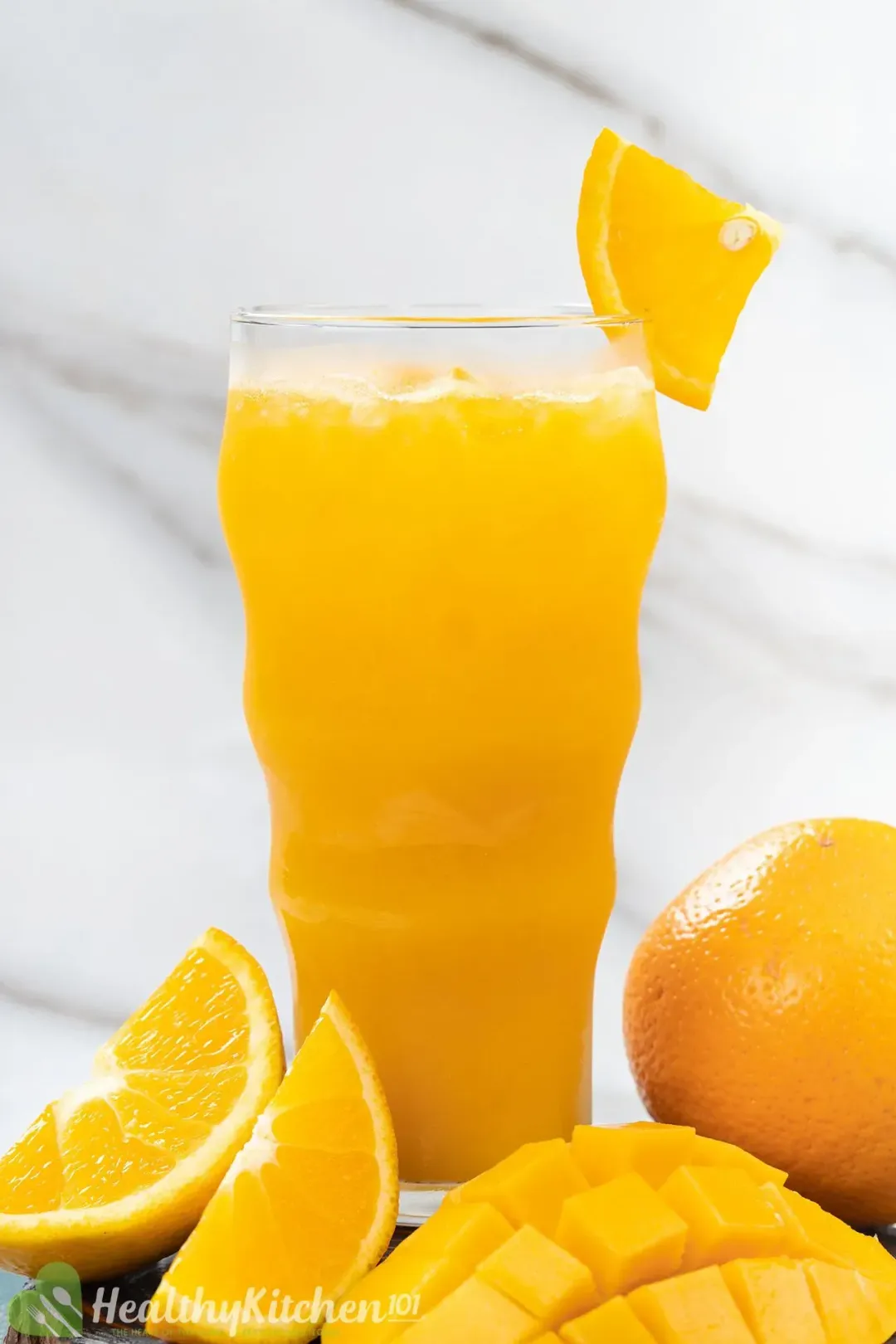
How to Pick the Perfect Mango
Mango selection requires a little experience and attention. Not to worry, we are here with some simple techniques to help give you guidance and clarity.
- Check the appearance and feel: Color isn’t always an obvious sign of ripeness for mangoes, so a better way is to touch and feel them. An unripe mango feels firm, but for juicing, you are looking for a bit of softness (and not too mushy) — in a similar sense as when you’re getting peaches and avocados.
- Smell the fruit: Juicy ripe mangoes should have a sweet fruity scent. Give your mango a whiff and pick the perfect aroma for you.
Can I Use Green Mango in This Recipe?
We don’t recommend using green mangoes for this recipe.
Green mangoes are basically unripe mangoes with a sour or nutty flavor, which doesn’t complement the oranges. Plus, they’re hard and won’t make a lot of juice.
If you love this recipe, you may found this mango juice roundup helpful. For more recipes on juice, have a look at our best healthy juice recipes.
How Long Does It Last?
For the best taste and quality, you should have your orange mango juice within 2 hours after making it.. Unlike the store-bought version, homemade juice with no preservatives is likely to spoil quicker.
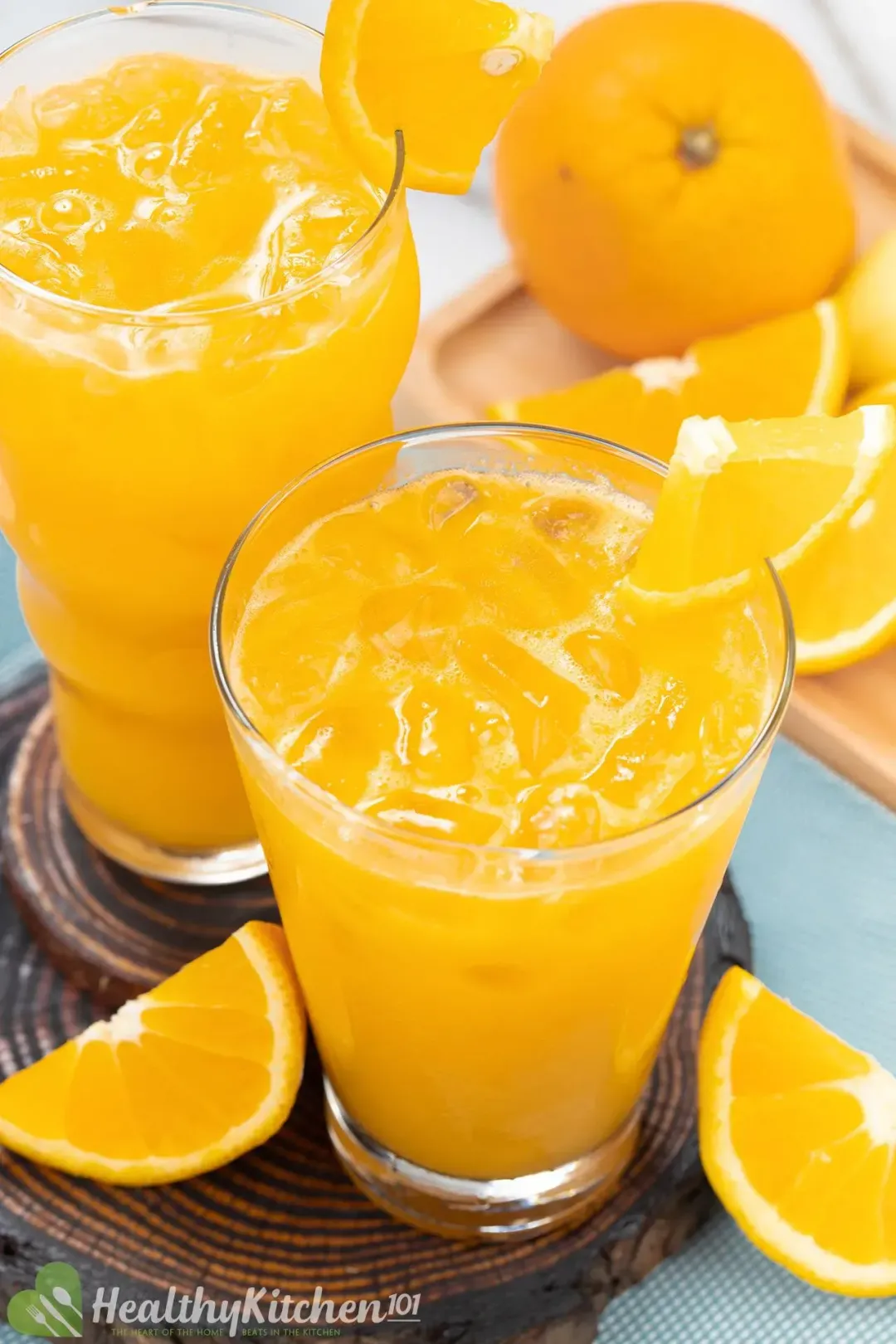
Freshly squeezed juice can last for about 2-3 days if stored in the refrigerator. In this case, keep your drink in an airtight container to limit air exposure.
If you are looking for some healthy juice recipes, our pineapple mango juice or passion fruit mango juice are also great options. Or check out this article for more beverage ideas.
Orange Mango Juice Recipe
Our orange mango juice recipe combines 2 readily available fruits without adding extra sugar, to make a quick, nutritious and tropical tasting drink.
- prep TIME 10 mins
- total TIME 10 mins
- COURSE Beverage
- CUISINE American
- SERVINGS servings
- CALORIES 110 kcal
INGREDIENTS
- 12 fl oz orange juice
- 16 oz mangos
- 1 cup water
- 1 cup ice
INSTRUCTIONS
Add 16 oz mango and 1 cup water into a blender and blend until pureed.
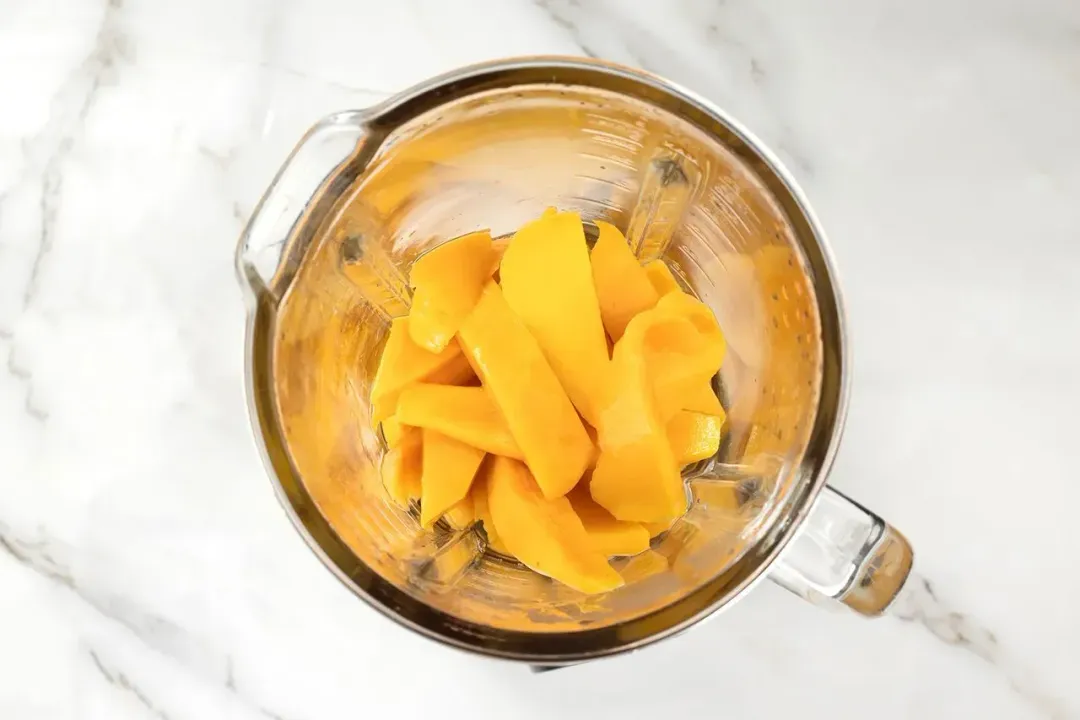
Strain the mango through a fine sieve to remove fiber.
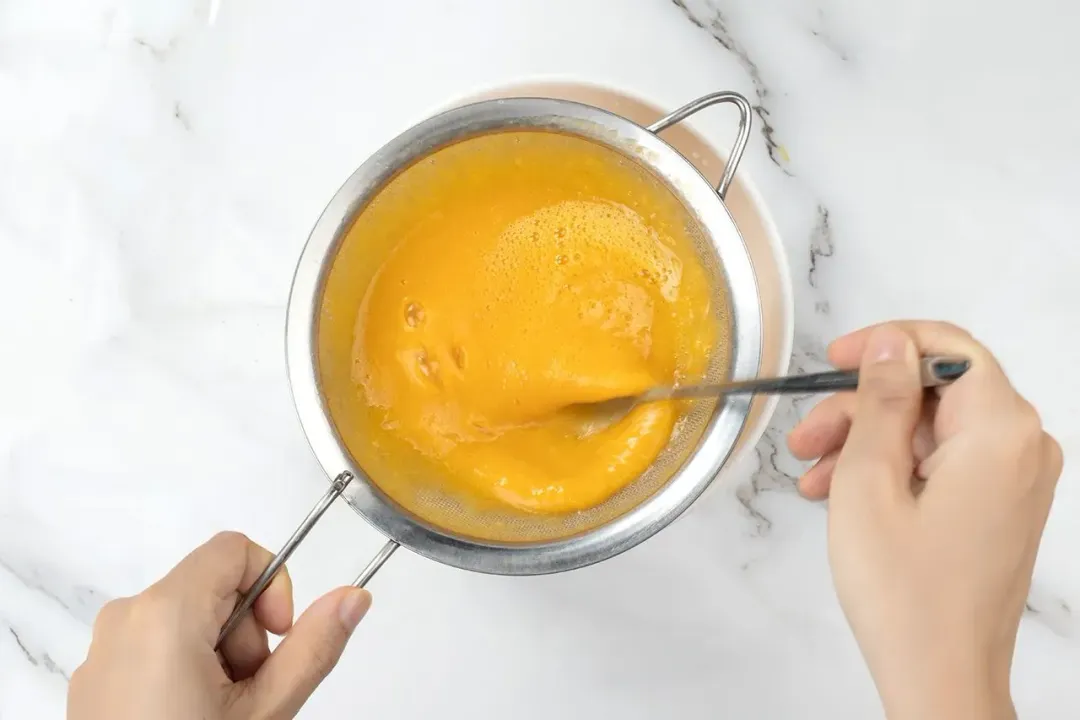
Add 2 fl oz orange juice.
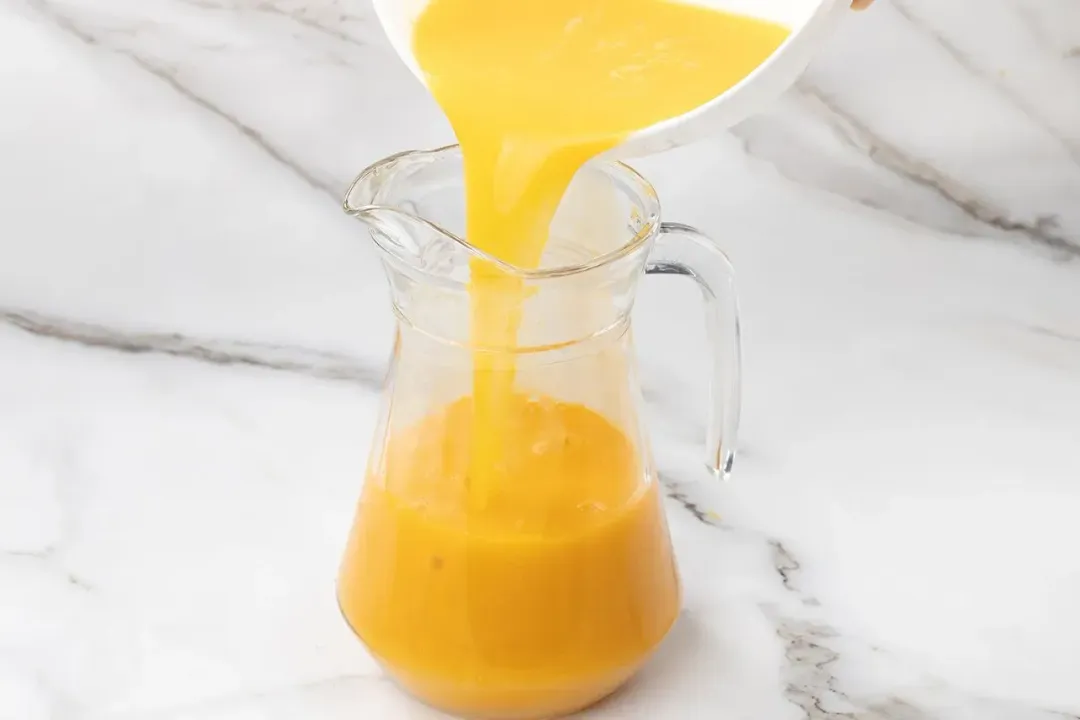
Serve it chilled with ice cubes.
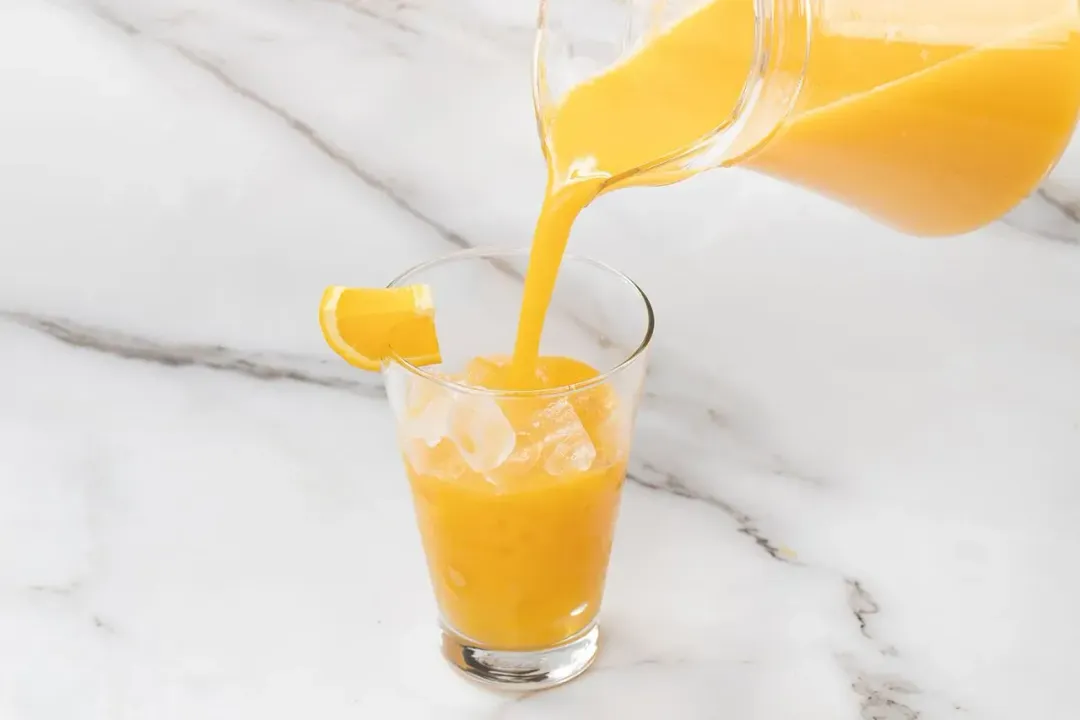
NUTRITION
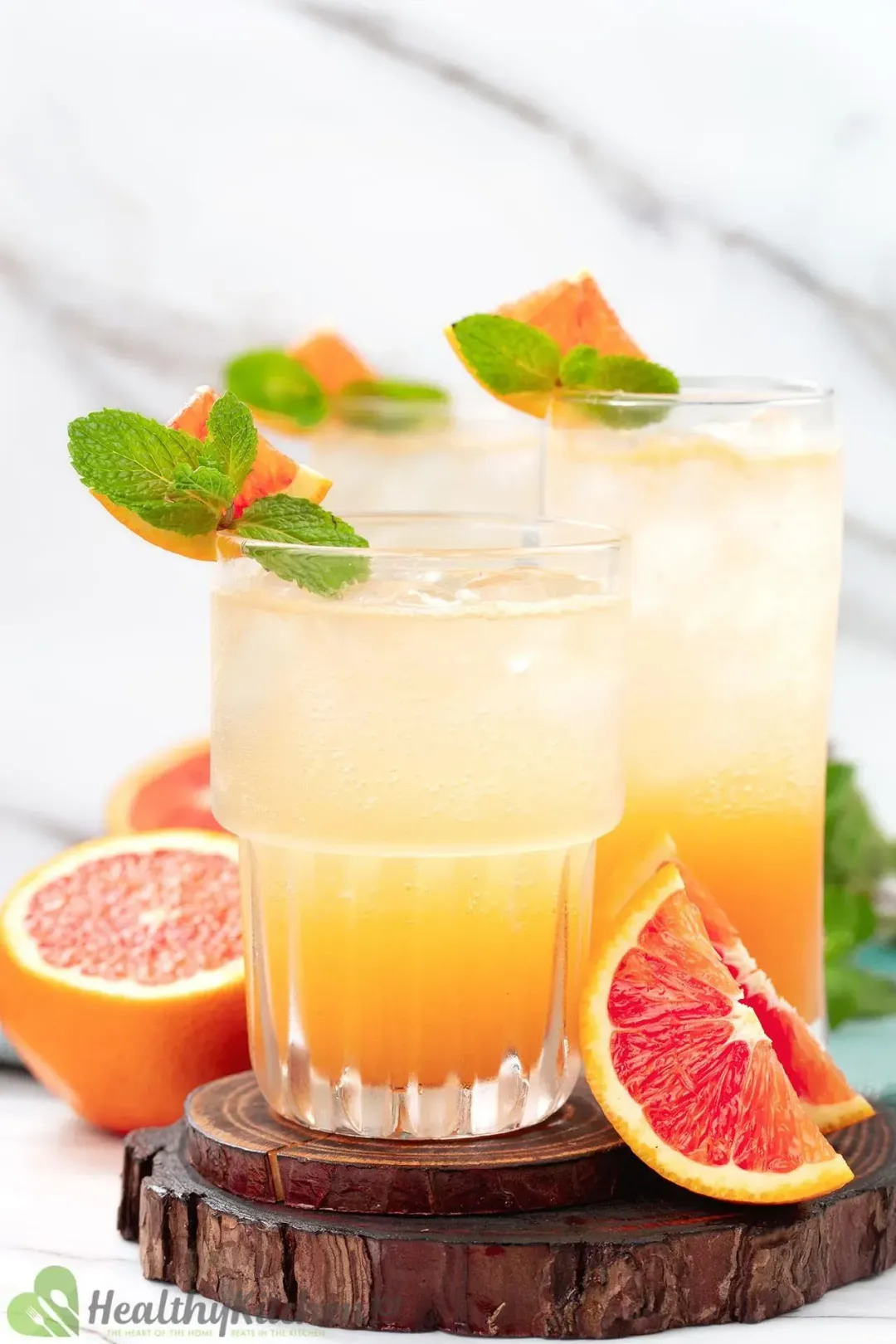
Tuyet Pham
Head Chef, Culinary ConsultantLuna Regina
Writer, AuthorNatalie Butler, RD, LD
Nutrition Reviewer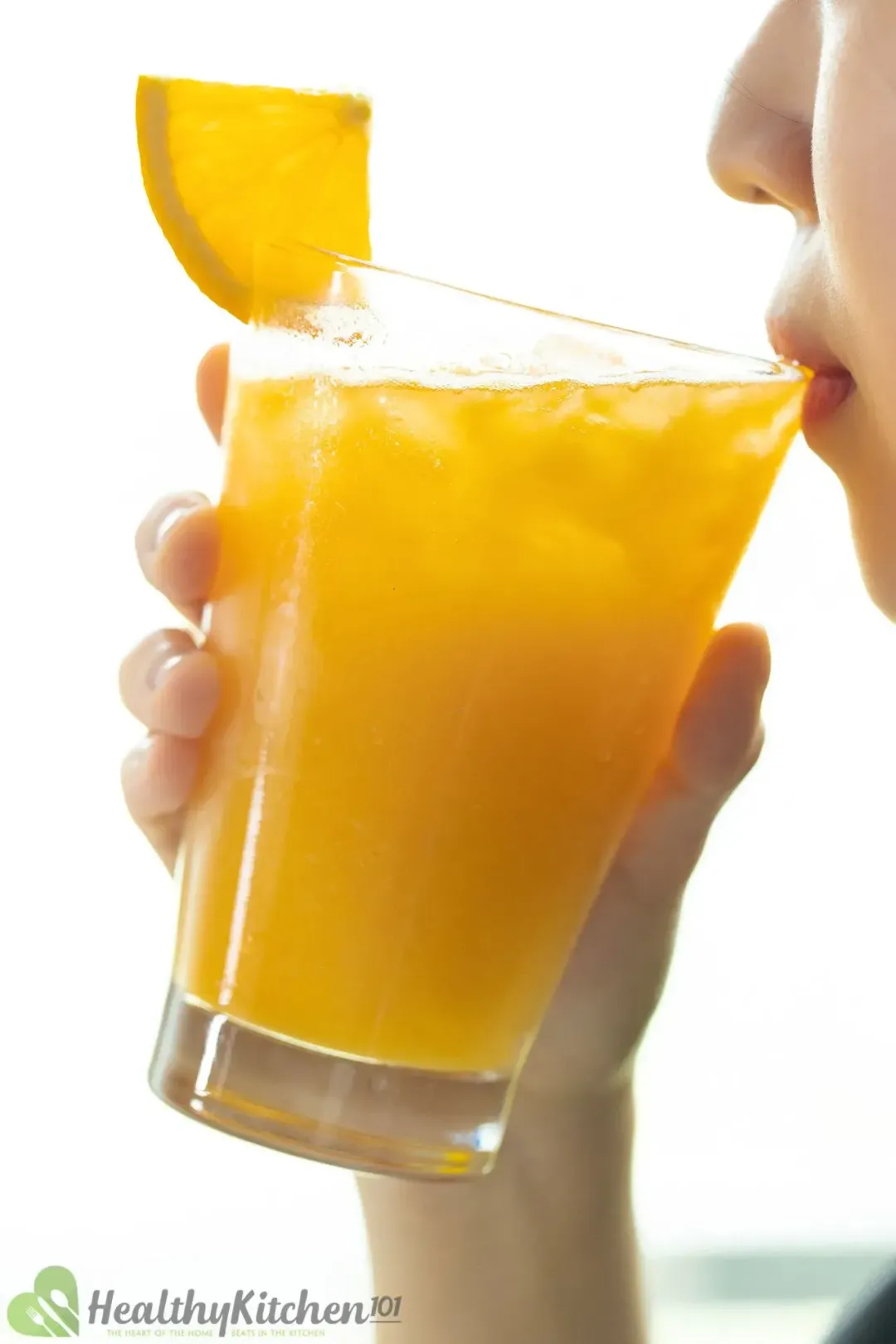
- JoealthouseGreat, easy to make. Refreshing!
- Balentyne PASo refreshing! not a fan of mango but this is really good.
